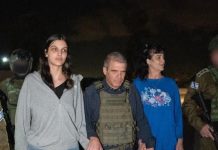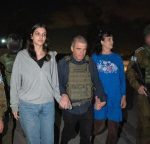
By MICHAEL R. GORDON, NYT
Near the Tabqa Dam on the Euphrates River after Syrian fighters with American air support captured it from Islamic State militants this month.
AL UDEID AIR BASE, Qatar – The salvo of American cruise missiles launched at a Syrian airfield last month was intended as a one-time message to dissuade President Bashar al-Assad from mounting another chemical weapons attack.
But at the high-tech command center here, the challenges for Lt. Gen. Jeffrey L. Harrigian, who oversees air operations in the Middle East, were just beginning.
General Harrigian had to protect American and allied troops from possible retaliation by Syrian warplanes as well as keep up airstrikes in and around the Islamic State stronghold of Raqqa, Syria. All the while, Syrian and Russian air defenses were on heightened alert, raising the risk to American and coalition aircrews in their campaign against the militants, also known as ISIS.
“If the Syrians were going to make a run at our guys, we were going to be in a position to defend them ourselves,” General Harrigian said in an interview. “The intent was to be in position to support our guys and get back into fighting ISIS.”
Some of the military’s most important operations have taken place thousands of feet in the air over Syria, all but invisible to the American public. A reporter for The New York Times was given access to the command center, offering a rare glimpse into how the military plans and orchestrates the complex ballet of strike, surveillance and refueling aircraft that keeps the war going around the clock.
A Base in the Desert
An outsize illustration of the principle “if you build it, they will come,” Al Udeid was constructed in a baking stretch of desert 20 miles south of Doha when Qatar had little air force of its own but was prepared to spend billions to build an airfield that a friendly superpower could use in a crisis. After the Sept. 11 attacks, the Bush administration began basing American warplanes here to carry out airstrikes in Afghanistan, though their deployment was initially kept secret.
Jeffrey L. Harrigian, then a major general, at a Pentagon briefing in 2014.
Saul Loeb / Agence France-Presse – Getty Images
Al Udeid continued to grow in importance thanks in part to Saudi Arabia, which became uneasy about hosting the American military, including its regional air operations center. It was moved here in 2003 from Prince Sultan Air Base south of Riyadh soon after the American-led invasion of Iraq.
Today, the American-led command center at this heavily secured base oversees air operations in Afghanistan, Iraq, Syria and other potential hot spots in the Middle East. The cavernous operations center is crammed with liaison officers from countries in the American-led coalition, the American military services, intelligence experts and officers who plan and direct the missions.
The challenge in operating in Syria’s crowded airspace is clear from a glance at a large video screen inside the center that tracks aircraft across the region. Russian and Syrian …read more
Source:: Israpundit















